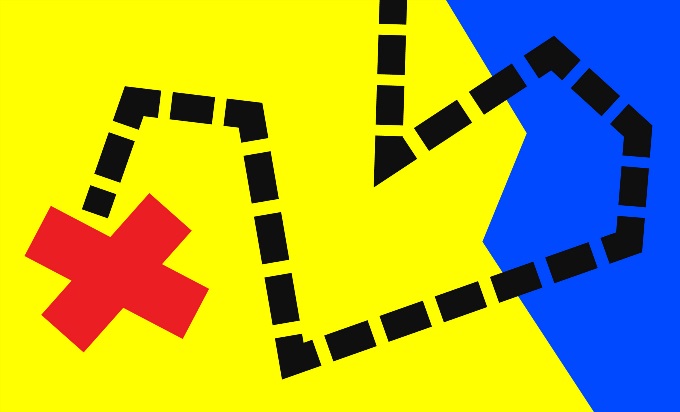Plan for Digital Accessibility or It Will Never Happen
6 min read
The best accessibility intentions won’t get you very far if you have no plan to put them into action. Goals must be set. Policies and procedures must be defined. Knowledge for creating accessible digital products must be disseminated. Digital creators must know their responsibilities and be held accountable for them.
The way forward must be shepherded by individuals with very specific roles. Long-term accessibility success depends on a formalized, documented, agreed-upon approach to serving all users well, now and for the long haul.
Create an Accessibility Road Map
Your organization needs a comprehensive plan. One that accounts for all forms of screen-based content and guides everyone who touches anything remotely digital. This vital document ensures your investment in digital accessibility will work. It outlines everything that must be planned and in place for accessibility compliance going forward.
If that sounds overwhelming, it’s not just you. And it’s not just overwhelming for those creating the plan, it’s also overwhelming for the people expected to carry it out. But you can do it. And the way to make it happen is to create an Accessibility Road Map.
Four Essential Parts
Depending on your organization, industry, users, and a host of other factors, your Accessibility Road Map may include or exclude several topics. But if you cover the following four areas in detail – even if you cover nothing else – you will set up your organization, your digital teams, and your users for lasting success.
1. Roles & Responsibilities
Identify everyone who touches anything digital at your organization. Determine what they should be doing to make your digital products accessible. Make this process manageable by splitting these people into different roles and clearly defined responsibilities
Define Who Creates and Purchases Digital Products
Ask yourself (or others who know) the following questions to get started.
- Who does what? – What work goes into creating a new site, app, or software? Who does it?
- How is content created? – How are new documents and files created for online use? Who creates these?
- What about audio and video assets? – How are new online videos, audio, and other media created? Who does what to create these and put them online?
- What about procurement? – Who purchases digital products?
- Who else has digital authority? – What other departments or stakeholders make digital decisions?
By answering these questions, you’ve just defined your baseline implementation team. These are the people who go through the day-to-day process of creating digital products at your organization.
Define Governing Team and Structure
Create a personnel hierarchy starting with these individuals, defining who reports to whom from the bottom up. Note any gaps where new hires may be needed or places where reporting structure and approvals are murky – these are areas for accessibility improvement
Next, think about the people needed to oversee the whole effort. What roles do you need to pull this thing off? One or more of these roles may not even exist yet. At the very least you likely need:
- A Business Owner – This may even be you.
- An Accessibility Expert – This person oversees the entire accessibility effort at your organization. This is likely a new hire.
- A Small Committee – This group should be comprised of the business owner, accessibility expert, a relied-upon developer, and key accessibility stakeholders in your organization.
Put these people in order of report at the top of your structure. Give them clear responsibilities and institutional power to ensure you meet accessibility goals. You probably have yet to hire at least one of them.
Define Responsibilities
Now, what do all of these people do exactly? Define everything they are responsible for with an eye to what the ideal process will look like rather than what it looks like right now. Document this clearly in your Accessibility Road Map. Each role definition should include:
- Title
- Short Job Description
- Responsibilities
- Place in the Hierarchy or Reporting Structure
2. Policies & Procedures
Creating complex policies and procedures may feel intimidating, but you don’t have to write your entire policy right away. In fact, you should keep things at a high level until you have all necessary parties on board, including some people you may still need to hire.
Start by setting up guidelines for what your accessibility policy should look like when it’s complete. You can evolve and enhance this guide as the team is established.
Define Policy
Research how other organizations, either in your industry or in complementary industries, have set-up digital accessibility policies. Identify benchmarks in the Accessibility Road Map. Note what you like about each and what you want to avoid. Think beyond policy language to include presentation of accessibility content as a whole. Include screenshots of notably good or notably bad examples.
Define Procedures
Focus on what accessibility procedures should be going forward rather than what they are (or are not) today. Ask yourself (or, again, someone who would know):
- What is the process for creating new products or content? – If your organization creates new products often, you may need multiple procedures to address multiple product types. Ultimately, this must become highly detailed.
- Where does accessibility fit into processes? – When and where should accessibility be brought in as a part of creating new digital products and content?
- Where do accessibility resources fit? – What part do your new or expanded roles and responsibilities play?
- What will training look like? – Who does it? How often?
- Who else is involved? – Are there other departments or stakeholders who make accessibility decisions that you haven’t addressed? For example, maybe procurement or IT?
Having this groundwork done and at the ready will make everyone’s lives easier when it’s time to finalize policies and procedures and make them available to the public.
3. Goals
Where is this all going? What is the intended outcome? You aim to create accessible digital products, of course, but how can your organization’s digital teams best work toward that? Start by identifying your goals.
Identify and Prioritize
Maybe your organization needs to create a stronger understanding for employees and stakeholders around the importance of accessibility. Maybe you need better training. Maybe you need more accessibility experts. Your emphasis will be unique, but you’ll need to achieve these and other goals to reach and maintain accessibility compliance. Keep the number of goals manageable (typically 3-7). Once you’ve identified goals, prioritize them. Goal number 1 is the most important.
Objectives and Measures
While defining your goals, document the specific things you’ll do to accomplish them. Then add specific metrics you’ll measure to determine success over time. This will turn high-level goals into a step-by-step process for achievement.
4. Milestones & Timeline
Depending on where you are in your digital accessibility journey, you may have many milestones behind you or they may all be ahead. Create a list of everything that has been done and when it happened. Those are your accomplished milestones.
Then create a list for everything that’s left – those are your remaining milestones. Assign time frames to upcoming milestones. Those in the far future will have more generic dates. Those coming up in weeks or months will be more specific.
What to Consider
What counts as a milestone? Think about the following accessibility undertakings:
- Remediation – Have you remediated existing experiences and technology yet? It’s a large project and likely will happen or did happen in phases. Identify those phases and document them as milestones.
- Training – How much training remains to be done? When will training procedures be defined? Are there any other education milestones you’ll work toward?
- Hiring – You’ve defined what roles need to be hired. What is the time frame for these new hires coming on board?
- The Accessibility Road Map – Include your document! When is its completion date? Also consider everything you’ve planned inside it. When will the policy or policies be defined? When will procedures be finalized?
Make Accessibility a Part of Your Process and Culture
An Accessibility Road Map brings reason, coherence, and clarity to your accessibility endeavor. But documentation is not an end unto itself. Ultimately, you must create a deep organizational understanding of why digital accessibility is important and how to correctly incorporate it into your everyday process.
The Accessibility Road Map gets you started. It helps you ask the right questions and encourages everyone at your organization to consider digital accessibility each time they create or adjust digital products. Once in place, your Accessibility Road Map will ensure you’re well on your way to making your digital products usable and useful for everyone, now and in the future.





